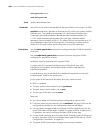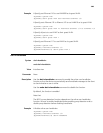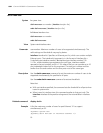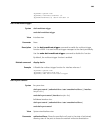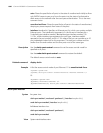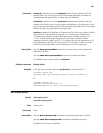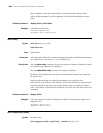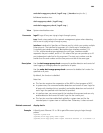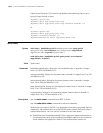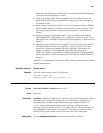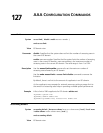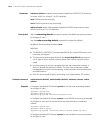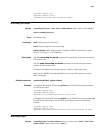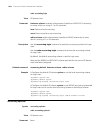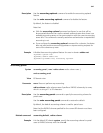
1910 CHAPTER 126: 802.1X CONFIGURATION COMMANDS
# Specify port Ethernet 1/9 to send a trap packet when detecting that a user is
trying to login through a proxy.
<Sysname> system-view
[Sysname] dot1x supp-proxy-check trap
[Sysname] dot1x supp-proxy-check trap interface ethernet 1/9
Or
<Sysname> system-view
[Sysname] dot1x supp-proxy-check trap
[Sysname] interface ethernet 1/9
[Sysname-Ethernet1/9] dot1x supp-proxy-check trap
dot1x timer
Syntax dot1x timer { handshake-period handshake-period-value | quiet-period
quiet-period-value | server-timeout server-timeout-value | supp-timeout
supp-timeout-value | tx-period tx-period-value }
undo dot1x timer { handshake-period | quiet-period | server-timeout |
supp-timeout | tx-period }
View System view
Parameter handshake-period-value: Setting for the handshake timer in seconds. It ranges
from 5 to 1024 and defaults to 15.
quiet-period-value: Setting for the quiet timer in seconds. It ranges from 10 to 120
and defaults to 60.
server-timeout-value: Setting for the server timeout timer in seconds. It ranges
from 100 to 300 and defaults to 100.
supp-timeout-value: Setting for the supplicant timeout timer in seconds. It ranges
from 10 to 120 and defaults to 30.
tx-period-value: Setting for the username request timeout timer in seconds. It
ranges from 10 to 120 and defaults to 30.
Description Use the
dot1x timer command to set 802.1x timers.
Use the undo dot1x timer command to restore the defaults.
Several timers are used in the 802.1x authentication process to guarantee that the
supplicants, the authenticators, and the RADIUS server interact with each other in
a reasonable manner. You can use this command to set these timers:
■ Handshake timer (handshake-period): After a supplicant passes authentication,
the authenticator sends to the supplicant handshake requests at this interval to
check whether the supplicant is online. If the authenticator receives no



